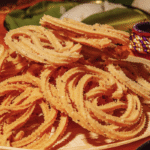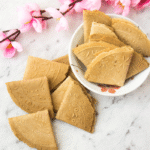How Malaysian Women Are Preserving Traditional Handmade Craft
In every woven thread, carved bead, or hand-dyed fabric, a story lives on. These stories are not just about aesthetics or function—they are about survival, identity, and legacy. Across the diverse cultural landscape of Malaysia, handmade craft has remained a powerful symbol of heritage and creativity. More importantly, these traditions are being safeguarded and passed on by the very hands of Malaysian women.
This article explores how women—often mothers, artisans, teachers, and cultural stewards—are at the heart of preserving Malaysia’s rich craft traditions. From rural villages in Sabah and Sarawak to bustling communities in Kelantan and Penang, the story of handmade craft in Malaysia is also the story of how Malaysian women protect and power their communities.
Throughout every region and generation, one thing remains constant—the influence and dedication of Malaysian women in keeping handmade craft alive. Whether it’s the rhythmic beating of traditional looms or the delicate threading of colorful beads, the spirit of Malaysia flows through every piece.
In preserving handmade craft, women aren’t just continuing an art—they are shaping a legacy. As this movement grows, it invites everyone to take part in a cultural journey that connects the past, empowers the present, and inspires the future.
Frequently Asked Question (FAQ):
1. What is the most popular handicraft in Malaysia?
Among the many traditional crafts in Malaysia, batik is one of the most popular and widely recognized. It is not only appreciated for its beauty but also for its cultural significance. Other popular crafts include songket weaving, rattan weaving, and beadwork.
2. What is the traditional craft of Malaysia?
Malaysia’s traditional crafts include a wide range of handmade items such as batik textiles, songket fabric, wood carvings, pottery, silverwork, and woven mats from pandan leaves. These crafts are often influenced by diverse ethnic communities across the country.
3. What kind of art is popular in Malaysia?
Malaysia has a rich and diverse art scene. Apart from traditional crafts, contemporary art, Islamic calligraphy, and visual storytelling through murals and installations have gained popularity. However, traditional art forms like batik and songket continue to remain central to Malaysian identity.
4. What is the importance of traditional crafts?
Traditional crafts are essential for preserving cultural identity, passing down ancestral knowledge, and fostering community pride. They also serve as an important economic resource for rural communities and a means of empowerment for artisans, particularly women.
5. What was the role of women in arts and crafts?
Women have historically been the backbone of craft preservation in Malaysia. They are often responsible for teaching, creating, and innovating within the craft space. Their roles span from producers and educators to entrepreneurs and cultural ambassadors, ensuring that heritage lives through each generation.
A Legacy of Artistry
In every woven thread, carved bead, or hand-dyed fabric, a story lives on. These stories are not just about aesthetics or function—they are about survival, identity, and legacy. Across the diverse cultural landscape of Malaysia, handmade craft has remained a powerful symbol of heritage and creativity. More importantly, these traditions are being safeguarded and passed on by the very hands of Malaysian women.
This article explores how women—often mothers, artisans, teachers, and cultural stewards—are at the heart of preserving Malaysia’s rich traditions handmade craft. From rural villages in Sabah and Sarawak to bustling communities in Kelantan and Penang, the story of handmade craft in Malaysia is also the story of how Malaysian women protect and power their communities.
These Malaysian women aren’t just keeping tradition handmade craft alive—they are turning every handmade craft into a statement of resilience and pride. Whether weaving rattan baskets in Sarawak or creating intricate songket patterns in Terengganu, each woman contributes to a growing movement of preservation and empowerment through handmade craft.
From Hobby to Heritage: Craft as a Way of Life
In states like Terengganu and Kelantan, textile arts such as songket and batik are pillars of tradition. Here, women work long hours hand-weaving gold threads into silk or painting floral motifs on cotton fabric. What may seem like a small item sold at a night market often takes weeks or even months to complete.
Take the story of Puan Zainab, a 62-year-old batik artisan from Kota Bharu. She learned the craft from her mother at age 12 and has continued since. What began as a family hobby turned into a full-time vacation and eventually, a small community workshop. Her intricate designs have gained attention in local exhibitions, and now her daughter and granddaughters are learning the same techniques.
Stories like hers are not rare. Across Malaysia, women are turning homes into creative hubs, passing on traditions while innovating with new ideas. These are the untold stories of women who quietly ensure that cultural identity remains intact, generation after generation.
Economic Empowerment Through Tradition
For many rural women, traditional crafts are not only about heritage—they are about livelihood. In places where formal employment opportunities are limited, selling handmade craft provides vital income. Women collaborate in cooperative groups, online platforms, and village exhibitions to market their goods.
Programs such as Kraftangan Malaysia and the Ministry of Women, Family and Community Development have initiated training sessions, microloans, and promotion campaigns to help powering women through cultural entrepreneurship. These programs equip women with skills in business, branding, and digital marketing.
In Sabah, the Rungus women are renowned for their beadwork. In Sarawak, the Iban women produce woven textiles called pua kumbu. In Negeri Sembilan, Minangkabau women maintain their tradition of sulam embroidery. Each of these crafts has unique stories behind them, rooted in family, spirituality, and identity.
Through these crafts, women are not only sustaining traditions—they’re building a better future for their children.
Challenges in a Modern World
Despite these efforts, preserving traditional handmade crafts Malaysia is not without challenges. Young people are often drawn to urban lifestyles, digital careers, or global trends that undervalue heritage. Materials can be expensive or hard to source. Additionally, the patience and discipline needed for these crafts often clash with today’s fast-paced life.
Women artisans also face gendered barriers. Their work may be undervalued or considered secondary to mainstream industries. Some struggle with digital literacy, limiting their ability to sell online or access broader markets.
Climate change also affects access to natural resources traditionally used in craftmaking—plants used for natural dyes or materials like bamboo and rattan are increasingly scarce due to environmental degradation. Some women have adapted by using recycled materials, but the change in quality or authenticity is sometimes criticized by purists.
Despite these obstacles, resilience defines these women. Community leaders are finding creative solutions—hosting school workshops, creating YouTube tutorials, and leveraging TikTok to demonstrate batik techniques. Social media, once seen as a threat to tradition, is now a tool for preserving traditional handmade craft. Collaborative online marketplaces and virtual exhibitions now offer new platforms for artisans to showcase their work.
Yet, resilience defines these women. Community leaders are finding creative solutions—hosting school workshops, creating YouTube tutorials, and leveraging TikTok to demonstrate batik techniques. Social media, once seen as a threat to tradition, is now a tool for preserving it.
The Rise of Female Cultural Ambassadors
Women like Puan Rosmah from Penang, a ceramic artist, and Kak Siti from Melaka, a master of Nyonya bead shoes, are now being recognized nationally and internationally. They serve as role models, educators, and custodians of heritage. They travel across states to share their knowledge at craft fairs and participate in cultural dialogues.
Their voices are shaping the future of Malaysia’s creative industries. Many are collaborating with universities and design students to adapt traditional motifs for modern products—scarves, handbags, shoes, and home décor. In doing so, they bridge generations and redefine relevance for a global audience.
These women are modern-day storytellers, ensuring that the craft is not static but alive, evolving, and respected.
Crafting Unity in Diversity
One of Malaysia’s most beautiful qualities is its diversity, and nowhere is this more evident than in its crafts. A single handmade craft of rattan basket or beaded necklace might reflect generations of cross-cultural exchange. When Malaysian women preserve these crafts, they are also preserving the nation’s shared identity.
Malaysia’s East and West coasts, its islands, and its highlands each offer unique techniques and cultural influences. The Indian kolam art, Chinese knotting, and Orang Asli wood carving all adds to the intricate mosaic of Malaysian craft heritage. Many of these influences are present in women-led workshops and cooperatives, where women from different ethnicities collaborate and share their craft traditions.
In Sarawak, projects like Tanoti House in Kuching support Penan women in producing high-quality woven textiles. In Selangor, refugee women from Myanmar and Rohingya communities are learning traditional Malay weaving techniques through NGO collaborations. These interactions foster empathy, empowerment, and cultural understanding.
In these stories, we see how handmade craft becomes a bridge—not just between generations, but between communities. These collaborations underscore a deeper truth: culture thrives when it is shared and nurtured by all.
One of Malaysia’s most beautiful qualities is its diversity, and nowhere is this more evident than in its crafts. A single handmade rattan basket or beaded necklace might reflect generations of cross-cultural exchange. When Malaysian women preserve these crafts, they are also preserving the nation’s shared identity.
Expanding Generational Knowledge
To ensure the survival of Malaysia’s traditional handmade craft heritage, intergenerational knowledge transfer is crucial. Many families treat craftmaking not just as a business but as a sacred family duty. Grandmothers and mothers involve their children in the crafting process from a young age—not just to teach the techniques, but to instill pride in their cultural identity. Weekend craft sessions in the kampung, or storytelling sessions during the crafting of a batik piece, are informal yet deeply educational moments.
In some rural areas, entire communities gather to weave mats or prepare natural dyes, turning the activity into a social affair. These gatherings strengthen communal ties and encourage younger generations to engage in their heritage. NGOs and schools have also begun organizing cultural immersion programs, where students spend time with traditional artisans to learn not only skills but the deeper meanings behind them.
Community workshops and family-owned studios often double as training centers where younger generations can explore the world of handmade craft with guidance from their elders. In these shared spaces, knowledge is passed down naturally, and innovation is welcomed. Women teach others how to blend old motifs with modern styles, helping handmade craft evolve without losing its soul.
Through social media and online marketplaces, these artisans are taking their handmade craft beyond borders. A beaded clutch bag, a batik shawl, or a pandan mat is now just a click away for customers worldwide. Every sale carries with it a story—of a woman, her culture, and the labor of love woven into every thread of her handmade craft.
Keeping the Flame Alive
The journey of craft preservation is not just about looking back—it’s about looking forward. As Malaysia navigates modernization and globalization, the presence of craft in everyday life becomes even more important. Whether it’s through exhibitions, workshops, or e-commerce, the possibilities for sustaining and celebrating tradition are growing.
Digital transformation is also helping keep the flame alive. Artisans are now experimenting with e-learning platforms and virtual tours of their studios. Some are even using augmented reality (AR) to teach batik painting interactively. Younger generations, previously disinterested, are becoming intrigued by the fusion of tradition and technology.
Consumers can play a role too—by buying from local artisans, attending cultural fairs, or simply learning about the origins of a songket or a woven bag. Schools can integrate cultural education into their syllabi. Media can highlight the stories of women behind these crafts. Celebrity endorsements and local influencers are now collaborating with craftswomen to give their work the visibility it deserves.
Each act of recognition helps fuel the flame of tradition and brings ancient skills into the consciousness of new audiences.
Each act of recognition helps fuel the flame of tradition.
Throughout every region and generation, one thing remains constant—the influence and dedication of Malaysian women in keeping handmade craft alive. Whether it’s the rhythmic beating of traditional looms or the delicate threading of colorful beads, the spirit of Malaysia flows through every piece.
In preserving handmade craft, women aren’t just continuing an art—they are shaping a legacy. As this movement grows, it invites everyone to take part in a cultural journey that connects the past, empowers the present, and inspires the future.
Global Appeal and Modern Collaborations
As global demand for sustainable and ethically made products grows, Malaysian handmade crafts are gaining attention beyond borders. Eco-conscious consumers in Europe, Japan, and Australia are increasingly drawn to artisanal items made with natural dyes, recycled materials, and traditional techniques. This global interest has created new opportunities for women artisans to collaborate with international designers and ethical fashion labels.
Organizations like Batik Boutique and Tanoti Craft have helped connect local makers with global markets through online platforms and fair-trade partnerships. These collaborations not only offer better income opportunities but also elevate the cultural profile of Malaysian artisans worldwide.
Universities in Malaysia are also stepping in by supporting craft-related research and innovation. Students work with seasoned artisans to modernize designs or integrate handmade craft into urban fashion, preserving the essence of heritage while meeting contemporary trends. These efforts foster pride, creativity, and entrepreneurship among both young Malaysians and veteran crafters.
Final Thoughts: Handmade with Heritage
At the heart of every handmade craft in Malaysia is a woman whose hands carry the past into the present. These women are the unsung heroes of cultural sustainability. Through their stories, their skills, and their spirit, they show us that tradition is not a relic—it’s a living, breathing force.
As we move forward, let us not forget the women who sit quietly at looms, who dye batik under the sun, who bead slippers with aching hands, yet smile with pride at their creations. They are not just preserving crafts—they are preserving identity, resilience, and community.
And through them, the story of Malaysia continues—handmade, heartfelt, and heritage-rich.





